
Those of you who have read my series on developing the Fulvia engine, might recall that in Part VI, I mentioned as a possible option, the use of Amal motor-cycle carburettors.
The Amal carburettor is a simple but effective device. Fuel is regulated by means of a single needle and jet arrangement, as in the S.U. carburettor, and the Amal too has a piston free to move vertically. The difference is that whilst the S.U.’s piston is raised by the manifold depression, the Amal’s is lifted by the throttle cable – there is no butterfly - so at full throttle there is a completely clear passage. The carburettors were available in bore sizes of up to 42mm.
Apart of course from motorcycles, the Amal was used on cars before the Second World War, notably by the extraordinary Freddie Dixon on his very fast Rileys that raced mostly at Brooklands. And in the 1960s it was possible to buy tuning kits for Minis that incorporated a pair of Amals.
Perhaps the most successful application, certainly in terms of achievements, was in the Vanwall four-cylinder 2.5 litre Formula one car in the late 1950s. However, this was an application with a difference: the carburettors were used solely as throttle bodies, since the engine was fitted with a Bosch fuel-injection system. Sorry about the small picture but larger versions are available from the source (at a price).
The Vanwall engine with its Amals
It seems that Amals are are still available here and here although I suspect that the larger ones might be difficult to find, but there are also modern Japanese carburettors manufactured by the likes of Mikuni and Keihin which are similar in many respects. Another possibility is Dell'Orto which still manufactures single choke motor-cycle carburettors. Remember that because the Amal presents a clear path a smaller diameter will probably suffice.
To conclude this short piece I should like to add a little about the formidable racer whose pictures appear here. This car is known as the Parker-GN. GN (Godfrey and Nash) was a small company that manufactured “cycle-cars” in the early 1920s. Usually powered by a vee-twin Matchless or J.A.P. engine, the cars featured a very effective gear-change mechanism and chain drive and thanks to their light weight, went very well for the time. Around 1925 the founders, H.R. Godfrey and Captain Archie Frazer-Nash separated, with Frazer-Nash going on to make the famous cars that bore his name which, up to 1939*, still used the chain drive system; later he designed various hydraulic devices including a famous gun turret. Godfrey went on to make H.R.G. cars which achieved some fame ceasing some time in the 1950s. They, like Frazer-Nashes, are very valuable now.
The Cirrus engine showing the four early Amal carburettors
The Parker G.N. is rather different: it is, rather improbably it must be said, fitted with a Blackburn (or De Havilland) Cirrus aero engine. This is an air-cooled four-cylinder of around six litres capacity, and as may be seen in the pictures, fitted with four Amal carburettors. I have seen this car racing several times in the capable hands of Richard Scaldwell and believe me, it is seriously fast!
There are some brave men around.
Sadly I have never heard of anyone fitting a Fulvia with Amals, but the principal appeal is that by staggering them the disadvantage of the uneven length ports could be overcome.
If any one has heard of a Fulvia being thus equipped I would love to hear about it.
* The company had since been bought by the Aldington brothers who founded AFN, the famous Porsche dealers (AFN = Archie Frazer Nash).





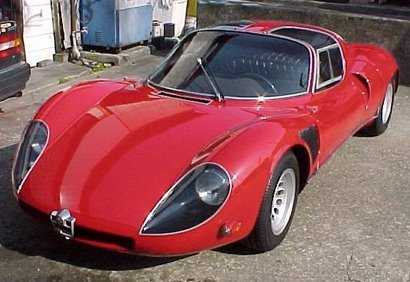
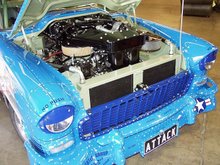
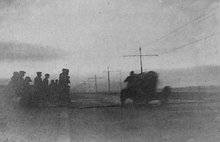


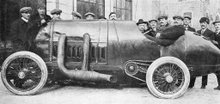


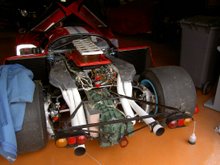

5 comments:
I have a set of 38 mikuni carbs laying around the shed from an suzuki GSXR1100 but it seems that even a motorcycle head is wider than that of a Fulvia. To stagger them would be tricky and would necitate the use of very short and very long tracks to keep them apart. The trottle linkage would be a complicated affair. can you tell me what the important bit is in getting the tracklenghts the same? Since all single carb multicilinders suffer from this effect. Can a lot of this effect be sorted with uneven lenght rampipes?
I would be surprised if a bike head is wider than a Fulvia's - obviously depending upon which bike!
You should see how Moto-Guzzi organised the 8 carbs on their 500cc V8!
Yes installing the bike carbs would be tricky - you are right that altering ram pipe lengths would work, but of course only really at full throttle. With the carbs equally spaced from the inlet valves, each carb would receive the "signal" at the same time.
Hello Paul,
Just to confirm almost all bike engines have wider heads than the Fulvia V4!
I've done much research into 600cc modern bikes that use 38mm throttle bodies. The narrowest bodies are still spaced apart by 40mm too much.
Its fairly easy to increase the spacings of throttle bodies, but very tricky to shorten the gap!
The throttle linkages put me off staggering the bodies.
I will have some pics of my set up soon............
Robert
GNs used GN engines. Long after the company had ceased to be, special builders used the chassis and all chain transmission with a variety of engines, JAP vee twins being popular. I have never heard of a Matchless vee twin being put in a GN. There is a world of difference between a tweaked JTOR JAP and an OHV Matchless. The JAP would put out 60bhp or more on petrol and eighty on alcohol... much more if you accepted the risk of it bursting asunder from time to time. The Matchless struggles to attain much more than 40bhp.
Amal carbs were a wonderful way to achieve one choke per cylinder in the days before Webers but a bit pointless now.
Thank you Anonymous 2 for your contribution.
You are of course correct - I must have been thinking of Morgan when I mentioned Matchless. I see that the GN vee-twin engine incorporated various Peugeot parts - and that GN began either with GN or Peugeot engines.
As for the "pointlessness" of Amals now, in principle you are again correct, unless of course one is building a special that is not anachronistic. My own Fulvia was built with the idea that all could have been done in the period and most of it could!
Post a Comment